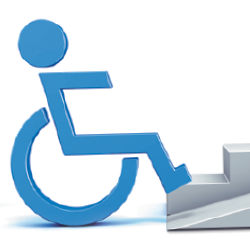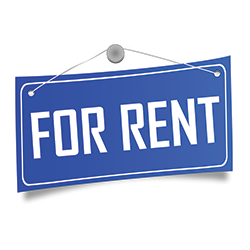|
exhibiting 101
 Rent Check
Renting an exhibit property can be a smart move – if you take the following pros and cons into consideration.
Many exhibit managers ask me about the merits of renting an exhibit versus purchasing a property outright. I typically respond by citing the industry rule of thumb that dictates renting an exhibit property (not including the cost of designing and producing custom graphics) will run about one-third to one-half the cost of purchasing a similar exhibit. So if you're going to use the same basic exhibit configuration more than three times, you'll probably want to invest in owning a property rather than renting. On the other hand, if you'll only need to use an exhibit once or twice, renting may be the best way to go. Aside from cost and anticipated frequency of use, here are a handful of key reasons why an exhibitor should opt for – or eschew – a rental property.
Improved Flexibility If your booth's square footage or shape changes from show to show, dealing with varying footprints can be difficult with owned properties. However, rental options can help you sidestep that challenge. Simply rent larger or smaller exhibit properties to suit your needs, or add or remove rental components to make your exhibit fit whatever size space you've contracted at the show. When renting exhibit properties, size does matter. Few exhibitors find renting 10-by-10-foot booths suitably versatile for their purposes based on the minimal number of back-wall configurations and furnishing options. But when you exhibit in larger linear or island booth spaces, the practicality of exhibit rental increases because you've switched from a standard pop-up back wall to a hard back wall that may need to support visual displays and products. Rentals also give exhibitors the opportunity to try various types of exhibit properties (e.g., custom, system, hybrid) and layout configurations to determine the design that works best before making a three- to five-year commitment with a large capital outlay. What's more, they offer flexibility to exhibitors who participate in shows in various strategic or vertical market segments where a different look and feel is required to appeal to that market's attendees or to display differing types of products. Flexibility also comes into play with scheduling. For example, some exhibitors may have an inadequate inventory of exhibit properties to cover show-schedule conflicts. These can include back-to-back shows where expedited shipping costs can bust a budget or overlapping show dates that don't allow the required exhibit properties to be available when needed. Having access to an extra rental property or two can help mitigate these types of situations. Cost-Effectiveness Start-up companies often want to deploy a bigger or more impressive exhibit to launch their brands but may not yet have the financial resources to invest in a large capital purchase. So they use their available funds to rent an eye-popping exhibit rather than make a substantial cash outlay to buy a much less impressive property. And with rentals, there are no ongoing ownership expenses, such as inventory and warehouse handling, storage fees, insurance premiums, and recurring maintenance and refurbishment costs. If you do have the cash on hand to purchase a property, your firm's financial policies may play a huge role in deciding whether expensing exhibit-property rentals or capitalizing purchased exhibit assets makes better financial sense. Rented exhibits are paid for as a one-time expense rather than capitalized as a depreciating asset. Custom rental components are completely paid for after their first use, so you should negotiate the purchase of such pieces if you think you'll need them again. That being said, not all companies want to own their exhibit properties for a number of strategic and financial reasons. For example, many of my clients establish a $10,000 threshold on the purchase of assets that will be capitalized and depreciated, usually over a three- or five-year period. Other clients had no choice but to rent a property since their exhibit-marketing programs were subsidized by grants or government funding that forbade the purchase of capital assets. Ease of Use Companies that want to offload the majority of tactical exhibit functions (e.g., ordering show services such as transportation, material handling, labor, utilities, etc.) find the turnkey management of basic rental packages a welcome convenience. This can be especially true if your exhibiting team is lean and you're needing to rent due to tight show schedules. Furthermore, renting means you won't have to deal with exhibit-disposal fees, a cost that many exhibitors don't consider. And when it comes to exhibiting internationally, it typically makes more sense to rent near the show site rather than purchase and ship properties overseas. Dealing with the hassle of shipping brokers and customs regulations can add unnecessary complexity, especially for smaller companies. Lack of Options You may have difficulty locating an exhibit house or supplier with properties that suit your specifications and design needs both strategically and physically. Not all exhibit houses keep an extensive inventory of rental properties on hand, and a modular/system exhibit may not portray the brand image your company desires. And even if you do find an ideal property, availability isn't guaranteed. Since other exhibitors are pulling from the same inventory of pieces, you'll need to commit as far in advance as possible to make sure your exhibitry is in stock. It's important to recognize that most rental exhibit properties aren't brand new and will often show some wear and tear. They may also be built from less expensive materials than you'd normally find on a purchased custom exhibit property. Finally, there could be limitations on how much customization the vendor will be able – or willing – to accommodate in order to adapt its rental property to meet your design needs. So unless you are renting a fully customized exhibit, you'll likely have to make some concessions that result in your exhibit lacking a personal touch or compelling branding elements. Line-Item Fees Exhibit-rental proposals are far from standardized. The rental cost may or may not include trial setup and preview, graphics, shipping and documentation, material handling, installation and dismantle (possibly with on-site supervision), and other show services. So you could sign a rental contract with a $10,000 price tag, only to find out later that the cost covered just the physical exhibit and none of the necessary ancillary components. Therefore, always ask for line-item proposals so you know what's included in the rental price. Note that if you rent an exhibit property from the trade show's general service contractor (GSC), it typically bundles the cost of material handling and a fixed I&D labor fee in the negotiated rental cost, which can give its proposal a financial advantage over those of exhibit houses. Higher Costs Rental exhibits might mean a higher overall ongoing cost since you have no equity in the exhibit properties. For instance, if you built and purchased a $100,000 exhibit and used it at three shows within a year, you would then own the exhibit property and therefore could use it for the next four years of its depreciable life and only incur ongoing expenses. But if you elected to rent that same property for $34,000 per show, you'd have paid approximately the same $100,000 by the end of the first year but would have no exhibit to use during years two through five. There is also potential for higher I&D costs with rental properties that may not have been designed for the required configuration, especially if the exhibit house didn't provide a full trial setup to iron out any kinks. And you could have to pay for the design and production of exhibit graphics each time a rental is used, unless you're planning on renting the same property multiple times and storing the graphics between trade shows. From cost-effectiveness and flexibility to limited options and hidden fees, renting an exhibit property is not a one-size-fits-all solution. However, now that you know the main reasons for and against rentals, you're better equipped to make a strategic decision that is best suited for your face-to-face marketing program. E  Candy Adams
Candy AdamsCTSM, CEM, CMP, CMM "The Booth Mom," is an independent exhibit project manager, trainer, speaker, consultant, and an Exhibitor Conference faculty member. CandyAdams@BoothMom.com
|
|
|
||||||||||||||||||||||||||||
|
|
||||||||||||||||||||||||||||
|
TOPICS Measurement & Budgeting Planning & Execution Marketing & Promotion Events & Venues Personal & Career Exhibits & Experiences International Exhibiting Resources for Rookies Research & Resources |
MAGAZINE Subscribe Today! Renew Subscription Update Address Digital Downloads Newsletters Advertise |
FIND IT Exhibit & Display Producers Products & Services All Companies Get Listed |
EXHIBITORLIVE Sessions Certification Exhibit Hall Exhibit at the Show Registration |
ETRAK Sessions Certification F.A.Q. Registration |
EDUCATION WEEK Overview Sessions Hotel Registration |
CERTIFICATION The Program Steps to Certification Faculty and Staff Enroll in CTSM Submit Quiz Answers My CTSM |
AWARDS Sizzle Awards Exhibit Design Awards Portable/Modular Awards Corporate Event Awards Centers of Excellence |
NEWS Associations/Press Awards Company News International New Products People Shows & Events Venues & Destinations EXHIBITOR News |
||||||||||||||||||||
|
||||||||||||||||||||||||||||






